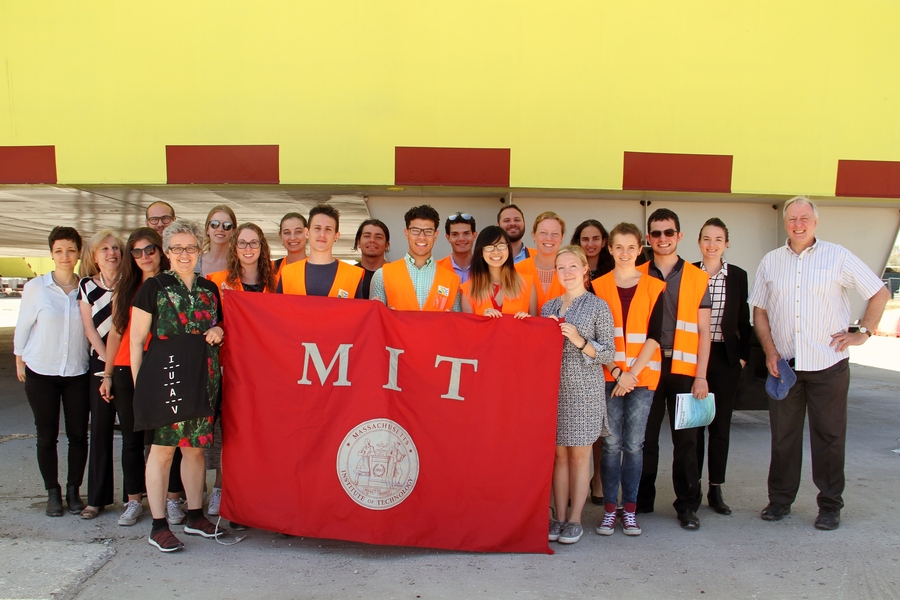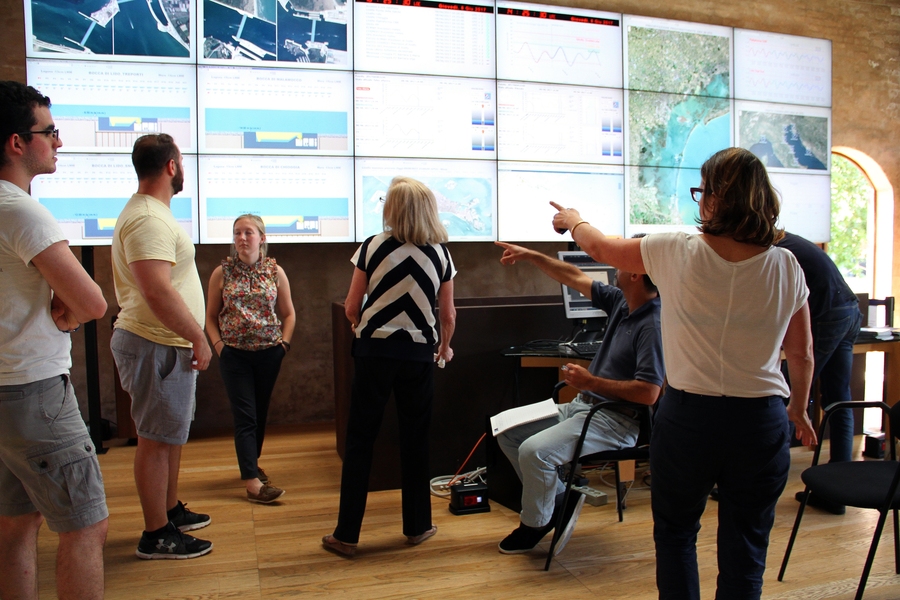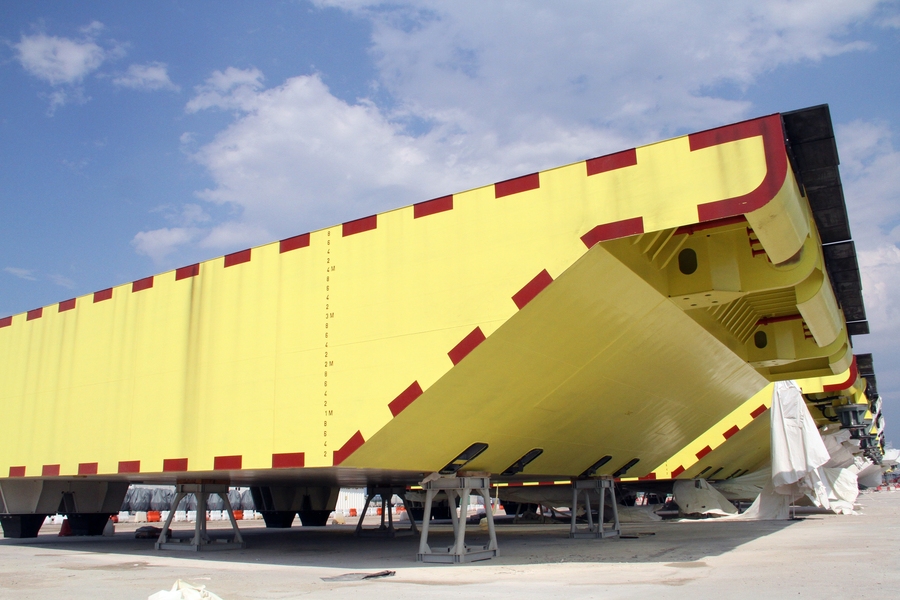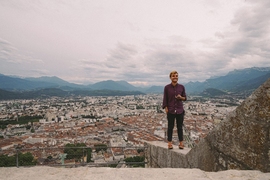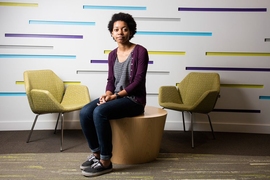This summer, MIT professors Paola Malanotte Rizzoli of the Department of Earth, Atmospheric and Planetary Sciences (EAPS) and Andrew Whittle of the Department of Civil and Environmental Engineering (CEE) led an intensive workshop with several Italian faculty exploring key challenges facing Venice. Ten MIT students and seven students from the University of Venice (IUAV) joined their engineering and urban planning expertise during the first two weeks at a research camp in Pellestrina, a small island in the Venetian Lagoon. Donning fluorescent orange vests and hard hats, the bilingual group worked in a pop-up classroom on a live construction site for the massive flood gates built to protect Venice from high waters.
Through a combination of lectures, interviews with local residents, and on-site visits to observe the city's Experimental Electromechanical Module (MOSE) floodgates in action, MIT and IUAV students set to work developing solutions to pressing engineering and climate change challenges.
Rizzoli explained the dynamics of rising sea levels, storm surges, and wind waves in the Venetian Lagoon under various climate change circumstances. IUAV Professor Laura Fregolent discussed depopulation, another major threat to Venice. Looking at solutions, Whittle compared the novel technology of the MOSE gates with about 15 major storm surge barriers worldwide. MIT students speculated about the risk of flooding back home, and what could be learned from the MOSE project as Boston considers building a four-mile barrier restricting the flow of water into the city.
Outside of the classroom, camp participants were treated to what Whittle describes as “an engineer’s delight” — the opportunity to observe the precise positioning of a 95-foot-long steel gate through four underwater cameras. Rising MIT junior Malik Coville enthusiastically concurred. “As a mechanical engineer, typically we tend to mess with smaller technologies in class,” he explains. “This is the first time I was introduced to something much larger.”
After the first week, MIT and IUAV students bridged divides across cultures and disciplines through field work, data collection, and big-picture ideas. One group performed statistical and spatial analysis of flood risk in the Venetian Lagoon and analyzed historical data to create projections for the years 2050 and 2100. Another group formed a think-tank to develop repopulation strategies, formulating plans to refurbish urban workspaces with 21st century technology and self-sustaining energy systems. They also created strategies to involve local students in community development by collaborating with Italian universities. A third group conducted extensive mapping and interviews to explore the impact and the perception of the MOSE project among Pellestrina’s inhabitants.
Paige Midstokke, MIT grad student in civil engineering and technology and policy, worked on mapping and data analysis, and appreciated her group’s multicultural, multidisciplinary composition. “It’s a really interesting group, a mix of Italian and U.S. university students with different styles of working and different perspectives on this place,” Midstokke said.
Of the 10 MIT students who participated in the research camp, eight stayed for an additional two-month period to continue their research. Hosted by IUAV and Consorzio Venezia Nuova, they continued to work on meteorological statistical models, urban issues, and prototyping an electrical system to control the MOSE floodgates. Thanks to their extensive contacts with Italian experts and locals, the MIT students came to view Venice not only as a unique research lab, but also as a deeply-rooted way of life. They embraced the urgency of the problems and the applied character of their research. “For one, it’s the most hands-on thing that we’ve ever dealt with,” Coville said. “We’re applying what we’re learning to actually save a city.”
Rizzoli, in agreement with Whittle, the Italian partners, and MIT-Italy Program Co-Director Serenella Sferza, praises the initiative as “successful beyond expectations.” She is working with EAPS, CEE, and all others involved to replicate the workshop next summer. “This is an exemplary prototype of how a global classroom should work,” Rizzoli says.
The students who participated in this year’s pilot experience will present their research, made possible by support from IROP, other academic grants, and MIT International Science and Technology Initiatives (MISTI), on Sept. 8 from 11 a.m. to 12:30 p.m. in Room 54-915 within the Department of Earth, Atmospheric and Planetary Sciences.
Based in the Center for International Studies, a program of the School of Humanities, Arts, and Social Sciences (SHASS), MISTI is MIT’s pioneering international education initiative.
